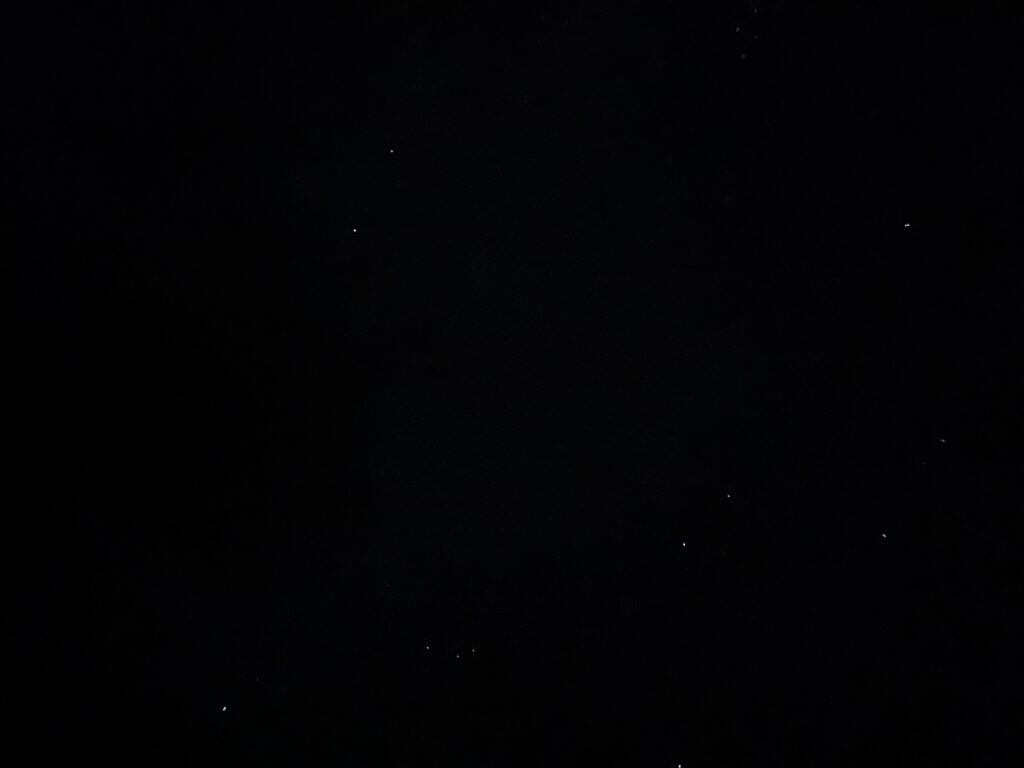One of the reasons I wanted to go on this trip was to have the chance to sleep outside under the stars.
The most memorable night skies of my life were those I saw on trips through canyons in Utah in the summers of 1981,1982, and 1983. A friend from college, Eric Johnston, was a post-doc in chemistry at the University of Utah those years. I had the good fortune to accompany him, his wife Ann Lindberg, and various friends down various rivers in rafts and kayaks.
On July 20, 1981, we were in Desolation Canyon, on the Green River many miles above where Larry and I started. I finished the journal entry for that day this way: “The night is beautiful: warm winds, no bugs, the sound of the river, thousands of stars. We are camping in a place you could not add to if you thought a long time.”
Perhaps that was the reverie of youth talking, or maybe it was the wildfire smoke blown in on two of the days of this trip that made its night skies less memorable. Whatever the reason, I wasn’t awestruck by the number of stars this time. Instead, I had a rendezvous with the few constellations most of us know–the Big Dipper, Orion, the Pleiades.
On the next-to-last night out we camped on a new-formed sandbar whose surface was three feet above the river. All through the night we could hear pieces of it collapsing into the water, like icebergs calving off a glacier.
As I lay on my back, warm in a sleeping bag, I could crane my neck and see just behind me a trapezoidal notch in the sky formed by two cliffs. As my eyes adjusted I saw Orion couchant in the notch, not yet roused from his day-long sleep.
As the night progressed and I fell in and out of sleep, I saw Orion rise from the horizontal, disappear behind one of the rock formations, reappear in the diagonal, and finally present himself upright above my feet. I looked at him as I contemplated my place in the universe, grateful he’d made himself available.
In one interlude of wakefulness I also saw three shooting stars, which have always been for me symbols of human evanescence. Whenever I see one I think of a moment in a book I read long ago called “The Gypsies.” It was written by Jan Yoors, a Belgian (and later an American) who at age 12 in 1934 ran away from home and joined a kumpania of Roma (Gypsies). He lived with them for five years.
We lay on our backs and looked up into the starry sky. I noticed a shooting star and, eager to share this with Nanosh, pointed out to him where it had passed, far away. In a hushed, husky voice he told me to never do this again; for each star in the sky is a man on earth. When a star runs away it means that a thief takes flight, and if you point a finger at a shooting star the man it represents is likely to be captured.
https://redstarline.be/en/content/jan-yoors
The night sky is not motionless, but it does seem changeless. That’s what Robert Frost is saying at the end of his poem, “On Looking Up By Chance at the Constellations.”
Still it wouldn’t reward the watcher to stay awake
In hopes of seeing the calm of heaven break
On his particular time and personal sight.
That calm seems certainly safe to last tonight.
It did last, every night. I hope to be back to watch it last some more sometime.

Recent Comments